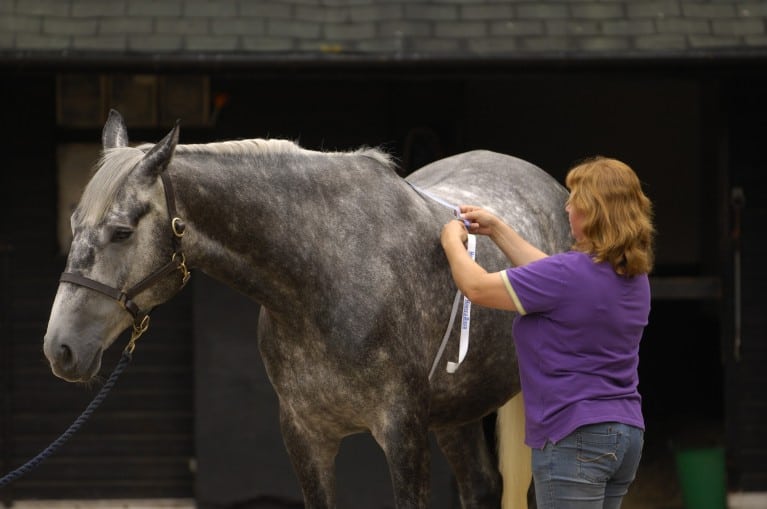20 handy tips to help keep your horse slim and healthy, from nutritionist Katie Williams.

1. Weighing your horse every one to two weeks will help you spot weight gain early. This allows you to take action before it becomes a health problem. Use a weighbridge or measure around his girth.
2. Increase your horse’s workload to use up energy – research in humans suggests that it increases insulin sensitivity. This will help to reduce the risk of insulin resistance and potentially laminitis. If you can’t ride, why not advertise for someone to help? There may be people who’d love to ride your horse. Or perhaps you could consider long-reining, lungeing or driving your horse, or moving to a yard with a horse walker.
3. Hang nets in the middle of the stable, rather than against a wall, so that your horse moves around more – it’s much harder to get the hay out.
4. Grass is the main source of energy for most horses, so access might need to be restricted. Grazing muzzles at least allow the horse to go out and studies suggest they can reduce grass intake by about 75%.
5. Put several haynets around the stable to encourage the horse to move around more – although it won’t burn many calories, it’s better than being completely sedentary and might help to make the hay last longer.
6. Soaking hay for at least half-an-hour should reduce its sugar content, making it more suitable for overweight horses and ponies.
7. Try not to use sprinkles of mixes and cubes as a treat or to make a feed more interesting! The energy quickly adds up. Half a scoop of mix provides enough energy for 20 minutes of schooling.
8. Good doers often gobble up their limited rations in no time. Use small-holed nets to make forage last longer – layer several inside each other to make the holes even smaller.
9. If your horse is on limited forage, divide his daily ration into lots of small meals so that his gut is empty for as little time as possible. Devise a rota with friends to put some forage in stables last thing or at midday if your horses are kept in during the day.
10. Try to use a manège, round pen or small area rather than a stable to restrict grazing access, but encourage your horse to move around more.
11. One megajoule (MJ, about 250 calories) is a million joules – so one more 1MJ is quite a big jump!
12. Feeding a balanced diet is important – good-doers don’t need calories, but they still need essential vitamins and minerals to keep them in good condition. A low-calorie balancer or supplement is ideal for this.
13. Restricted fibre intake can reduce B vitamins, normally produced by bacteria as they ferment fibre in the hindgut. This can result in a poor coat and hooves. Look for good-quality supplements that contain a full range of B vitamins to avoid these problems.
14. Limited fibre can also increase the risk of gastric ulcers, even in overweight horses. Alfalfa is a natural buffer to acidity in the gut so it makes the ideal fibre feed to avoid ulcers.
15. If your yard has only haylage or really good hay available, replace some kilograms of it with a low-energy, chopped-fibre feed. A chopped-fibre feed can have an energy value as low as 7MJ/kg, as opposed to 9 or 10MJ/kg in haylage.
16. Make your horse’s bucket feed last longer by placing smooth, large pebbles on the top of the feed so that he has to eat around them. Smooth, large pebbles won’t hurt his muzzle and can’t be picked up. They’re a great way to reduce the surface area of the feed, which slows the horse down when he eats.
17. Grass is normally an abundant source of certain vitamins and minerals. Horses on limited grazing miss out on these and you might need to feed more than the recommended amounts of balancers or supplements to make up for what the horse isn’t getting from pasture. Ask a nutritionist for advice on this.
18. Consider using straw as a source of forage – if introduced slowly and carefully, it can provide fibre without too many calories. Oat straw is best because it is more digestible. Don’t use straw for horses with poor teeth or those who have a history of impaction colic.
19. There are low-sugar licks available that can be used to provide some stimulation in the stable and allow the horse to top up on essential nutrients.
20. Try hanging root vegetables, such as swedes, or hazel twigs around the stable because these provide additional sources of fibre and keep your horse occupied when stabled.















